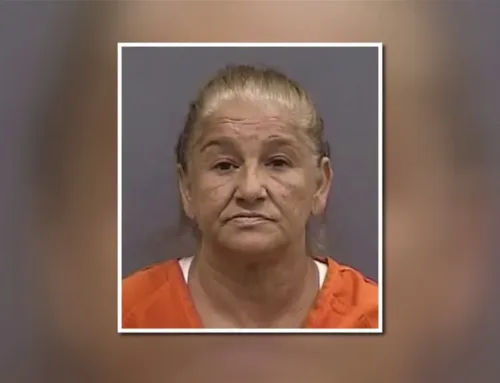Jim Bronskill
July 25, 2021
-CTV
OTTAWA — Canada’s spy service closely monitored the burgeoning nationalist movement in the 1960s and ’70s, poring over pamphlets, collecting reports from confidential sources and warily watching for signs of Communist infiltration, once-secret records reveal.
The RCMP’s security branch, responsible for sniffing out subversives at the time, quietly tracked the rise of the Committee for an Independent Canada, seeing it as ripe for “exploitation or manipulation” by radicals.
The committee, which attracted numerous political and cultural luminaries, pushed for greater Canadian control of the industrial, media and foreign policy spheres in an era of profound American dominance.’
The Canadian Press used the Access to Information Act to obtain the RCMP’s four-volume, 538-page dossier on the committee as well as a file on a forerunner organization from Library and Archives Canada. Some passages, though more than 60 years old, were withheld from release.
The Canadian Security Intelligence Service, which assumed counter-subversion duties from the RCMP in 1984, transferred the records to the National Archives, given their historical significance.
The Mounties’ interest was piqued in the spring of 1960 when author Farley Mowat gathered neighbours at his home in Palgrave, Ont., to form what would soon become the Committee for Canadian Independence.
Mowat was instantly spurred into action upon reading journalist James Minifie’s book “Peacemaker or Powder-Monkey: Canada’s Role in a Revolutionary World,” rattled by its concerns about the erosion of Canadian sovereignty.
The fledgling committee advocated distancing Canada from western military alliances and reasserting the country’s control over its airspace and territorial waters.
In August 1960, as the RCMP opened a file on the committee, a sergeant surmised the Communist party “must certainly be joyous” at the development given it had long espoused similar ideas. However, the Mounties had uncovered no information to suggest the group was “Communist inspired.”
While Mowat’s effort faded from the public conversation, hand-wringing about Canadian independence persisted.
Early in 1970, Toronto Daily Star editor Peter C. Newman, former Liberal cabinet minister Walter Gordon and economist Abe Rotstein hatched plans for the Committee for an Independent Canada during a meeting at Toronto’s King Edward Hotel.
A statement of purpose published by the committee that September said it realized the benefits of Canada being neighbour to the most powerful nation in the world and rejected the idea of closing the taps of needed foreign capital.
“But our land won’t be our own much longer if we allow it to continue to be sold out to foreign owners. Not if we allow another culture to dominate our information media. Not if we allow ourselves to be dragged along in the wake of another country’s foreign policy.”
A month later an RCMP corporal in the security service’s Toronto detachment warned in a two-page memo the publicity the committee had garnered made it a “vulnerable target for subversive penetration.”
Gordon, a longtime economic nationalist, was honorary chairman of the committee, with publisher Jack McClelland and Claude Ryan, director of influential Montreal newspaper Le Devoir, serving as co-chairmen.
The politically non-partisan organization’s steering committee included dozens of notable members of the Canadian intelligentsia, including Mowat and fellow author Pierre Berton, publisher Mel Hurtig, poet Al Purdy, Chatelaine magazine editor Doris Anderson, lawyers Eddie Goodman and Judy LaMarsh (who had also been a Liberal cabinet minister), union activist and longtime NDP stalwart Eamon Park, and Flora MacDonald, shortly before she became a Progressive Conservative MP.
A source whose name is blacked out of a March 1971 memo provided the RCMP with committee literature including a letter from student co-ordinators Gus Abols and Michael Adams.
“The support of young Canadians is essential, because only through our united action will the government and the Canadian public generally realize the seriousness of our country’s situation and the extent of our commitment to the preservation of Canada,” the letter said.
Adams recalls being a graduate student the University of Toronto, strolling to class, when Goodman, whom he knew from Conservative political circles, pulled over his car and told the young man to jump in because “we’re going to start up something that I think you’d be interested in.”
Adams, who would go on to build Environics Research Group into a leading pollster, has fond memories of accompanying Gordon on a committee trip to London, Ont., to promote the nationalist cause to students.
As the “young guy” at committee meetings, Adams revelled in the impressive company.
“It was a wonderful group,” he said. “They were incredibly nurturing and helpful.”
For their part, however, RCMP security officers didn’t seem to know what to make of the committee.
An August 1971 memo to divisions from RCMP headquarters said the committee had taken a moderate, middle class-oriented stance rather than a radical approach. Elements of the New Left and the Communist party had shown interest in the committee, but the RCMP was not aware of “any significant degree of influence or penetration.”
Still, the Mounties would continue to eye the committee because its aims and programs “provide a potential for exploitation or manipulation by groups or individuals of a subversive nature.”
On the contrary, the committee was formed to keep the nationalist movement from falling into the hands of the Communists and the far left represented by the NDP’s Waffle initiative, said Stephen Azzi, a professor of political management at Carleton University in Ottawa.
“The RCMP intelligence unit appeared to be staffed by people with little knowledge, with scant research skills and with deep paranoia,” Azzi said in an interview.
The Mounties studiously monitored the committee through the 1970s, clipping news items and filing memos. A confidential source advised the RCMP of plans for the group’s Ottawa demonstration in January 1975, suggesting they would muster “25-30 people instead of the 60 previously planned.”
By this point, the committee was no longer a potent force in Canadian public life in any event, Azzi sai
Pierre Trudeau, the Liberal prime minister of the day, was openly skeptical of the nationalist agenda but had adroitly harnessed support for the movement to shore up electoral support, particularly in southern Ontario, he added.
Several of the committee’s ideas were realized through creation of Crown corporation Petro-Canada, the Foreign Investment Review Agency, the Canada Development Corporation to foster Canadian-controlled enterprises, and new rules for homegrown content on the airwaves.
Many effects of those policies linger today, Azzi said. “I think our sense of Canada to a large extent was shaped in that period.”




